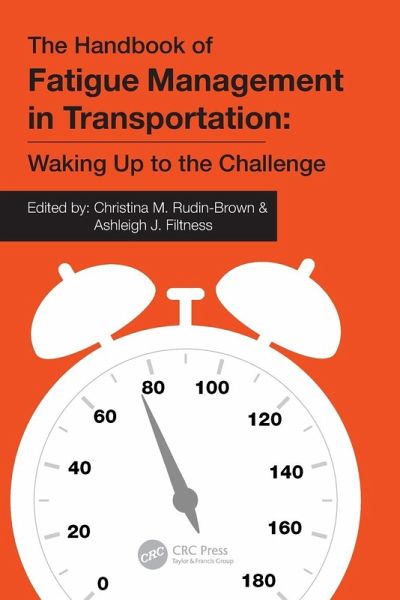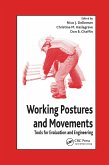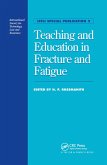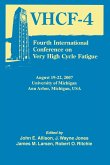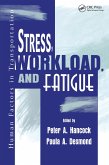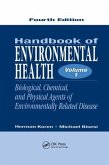The Handbook of Fatigue Management in Transportation
Waking Up to the Challenge
Herausgeber: Rudin-Brown, Christina M; Filtness, Ashleigh J
The Handbook of Fatigue Management in Transportation
Waking Up to the Challenge
Herausgeber: Rudin-Brown, Christina M; Filtness, Ashleigh J
- Broschiertes Buch
- Merkliste
- Auf die Merkliste
- Bewerten Bewerten
- Teilen
- Produkt teilen
- Produkterinnerung
- Produkterinnerung
This book covers topics of interest to a broad range of readers looking to develop and implement an effective fatigue risk management system in a single volume. It will an ideal text for professionals and graduate students in the fields of ergonomics, human factors, occupational health and safety, and automotive engineering.
Andere Kunden interessierten sich auch für
![A Guide to Active Working in the Modern Office A Guide to Active Working in the Modern Office]() Robert BridgerA Guide to Active Working in the Modern Office76,99 €
Robert BridgerA Guide to Active Working in the Modern Office76,99 €![Working Postures and Movements Working Postures and Movements]() Working Postures and Movements105,99 €
Working Postures and Movements105,99 €![Teaching and Education in Fracture and Fatigue Teaching and Education in Fracture and Fatigue]() Teaching and Education in Fracture and Fatigue91,99 €
Teaching and Education in Fracture and Fatigue91,99 €![Fourth International Conference on Very High Cycle Fatigue (Vhcf-4) Fourth International Conference on Very High Cycle Fatigue (Vhcf-4)]() AllisonFourth International Conference on Very High Cycle Fatigue (Vhcf-4)246,99 €
AllisonFourth International Conference on Very High Cycle Fatigue (Vhcf-4)246,99 €![Stress, Workload, and Fatigue Stress, Workload, and Fatigue]() Stress, Workload, and Fatigue66,99 €
Stress, Workload, and Fatigue66,99 €![Handbook of Environmental Health, Two Volume Set Handbook of Environmental Health, Two Volume Set]() Herman KorenHandbook of Environmental Health, Two Volume Set199,99 €
Herman KorenHandbook of Environmental Health, Two Volume Set199,99 €![Handbook of Environmental Health, Volume I Handbook of Environmental Health, Volume I]() Herman KorenHandbook of Environmental Health, Volume I103,99 €
Herman KorenHandbook of Environmental Health, Volume I103,99 €-
-
-
This book covers topics of interest to a broad range of readers looking to develop and implement an effective fatigue risk management system in a single volume. It will an ideal text for professionals and graduate students in the fields of ergonomics, human factors, occupational health and safety, and automotive engineering.
Hinweis: Dieser Artikel kann nur an eine deutsche Lieferadresse ausgeliefert werden.
Hinweis: Dieser Artikel kann nur an eine deutsche Lieferadresse ausgeliefert werden.
Produktdetails
- Produktdetails
- Verlag: CRC Press
- Seitenzahl: 580
- Erscheinungstermin: 30. Januar 2025
- Englisch
- Abmessung: 234mm x 156mm x 31mm
- Gewicht: 830g
- ISBN-13: 9781032081441
- ISBN-10: 1032081449
- Artikelnr.: 72542031
- Herstellerkennzeichnung
- Libri GmbH
- Europaallee 1
- 36244 Bad Hersfeld
- gpsr@libri.de
- Verlag: CRC Press
- Seitenzahl: 580
- Erscheinungstermin: 30. Januar 2025
- Englisch
- Abmessung: 234mm x 156mm x 31mm
- Gewicht: 830g
- ISBN-13: 9781032081441
- ISBN-10: 1032081449
- Artikelnr.: 72542031
- Herstellerkennzeichnung
- Libri GmbH
- Europaallee 1
- 36244 Bad Hersfeld
- gpsr@libri.de
Dr Christina (Missy) Rudin-Brown, PhD, CCPE has over 20 years' experience in transportation safety human factors research and investigation and has published over 100 peer-reviewed publications. She currently manages the Human Factors and Macro Analysis team at the Transportation Safety Board of Canada (TSB) and does part-time consulting with Toronto-based Human Factors North, Inc. She has investigated the existence, influence, and management of fatigue in occurrences from all modes of transportation and is an expert member of several international transportation safety committees. She is co-editor, with Dr Samantha Jamson, of the book "Road Safety and Behavioural Adaptation: Theory, Evidence, and Action", published by Taylor & Francis (CRC Press). Professor Ashleigh Filtness, PhD is a Professor of Transport Human Factors and Sleep Science at Loughborough University, UK. Ashleigh is fascinated by sleepiness and fatigue and their impact on safety. She has spent over 15 years' performing transportation safety research and has authored over 90 peer-reviewed publications. Since completing her PhD in 2011 on 'Obstructive sleep apnoea and daytime driver sleepiness', Professor Filtness has continued her fatigue research working in the Human Factors groups at the Monash University Accident Research Centre (Melbourne) and the Queensland University of Technology's Centre for Accident Research and Road safety in Australia before moving to the Transport Safety Research Centre at Loughborough University in 2016. Her research seeks to better understand the situations that contribute to sleepiness/fatigue and how these can best be managed to reduce the impact on safety. She specialises in vehicle operator impairment in road and rail transport and has a wealth of experience conducting competitively funded research, industry and government funded projects seeking to improve safety.
Section 1. Fatigue science and transportation. 1.1. Toward a More Precise
Definition of Fatigue. 1.2. Measuring operator fatigue and sleepiness.
1.3. Challenges in fatigue research and enforcement. 1.4. The Effects of
Fatigue on Performance in Transportation Operations. 1.5. A practical
Human Factors method for developing successful fatigue countermeasures.
Section 2. Fatigue-related Consequences in Transportation. 2.1.
Fatigue-related consequences on road crashes. 2.2. Fatigue risk in Great
Britain's railway industry. 2.3. Awakening to the Challenge of Fatigue
Management in Maritime Transportation. 2.4. Fatigue-related consequences
in Aviation. 2.5. Telling the story: How and why investigating for fatigue
can improve safety in transportation operations. 2.6. Fatigue's effects on
occurrence survivability. 2.7. Regulatory and Legal Frameworks for
Managing Fatigue in Transportation. Section 3. Factors to Contribute to
Fatigue and Sleepiness in Transportation. 3.1. Sleep Pressure and
Circadian Rhythms. 3.2. Jet Lag, Sleep Timing, and Sleep Inertia. 3.3.
Sleep disorders and driving. 3.4. Task-related causes or contributors to
fatigue and sleepiness. 3.5. Lifestyle as a mediator of fatigue and
sleepiness. Section 4. Managing Fatigue and Promoting Alertness in
Transportation. 4.1. Approaches to Fatigue Management: Where We Are and
Where We're Going. 4.2. Rules resistance: The inequitable trade, missing
logical links and solutions to surmount the challenge. 4.3. Work
scheduling - Biomathematical modelling for fatigue risk, and its role in
fatigue risk management processes. 4.4. Fatigue risk thresholds. 4.5.
Fatigue profiling: An approach to understand occurrence, causes and effects
of fatigue in people working in different transport sectors. 4.6. Fatigue
detection technology. 4.7. Individual Countermeasures to Fatigue. 4.8.
Light as a countermeasure to sleepiness and its potential for use in the
transport industry. 4.9. It takes two: Health management and its interface
with fatigue. 4.10. Aircrew fatigue and scheduling - a summary of some
recent studies using the same outcome measure. 4.11. Fatigue management
education for young novice drivers. Section 5. Transportation Fatigue Risk
Management in Practice. 5.1. Tram Operations Limited - Insights from our
journey to improve fatigue and wellness management.. 5.2. Assessing
railway traffic controller safety with an hourly risk index. 5.3. Rail
transport: Lessons learned in implementing a sleep apnoea assessment
program in the transportation industry. 5.4. Marine transport - Using
technologies for managing the risk of fatigue at sea. 5.5. Fatigue and
sleepiness in UK policing. 5.6. Managing commercial vehicle driver fatigue
in Canada: A government perspective. 5.7. Friend or foe? The use of
digital devices in the fight against monotony and boredom in Air Traffic
Management. Section 6. Fatigue Risk Management of the Future. 6.1. Road
vehicle automation and its effects on fatigue, sleep, rest and
recuperation. 6.2. Through the darkness of future past: A cautionary
tale. 6.3. Space transport and fatigue. 6.4. The future of fatigue
management: Strategies, policies, and societal expectations.
Definition of Fatigue. 1.2. Measuring operator fatigue and sleepiness.
1.3. Challenges in fatigue research and enforcement. 1.4. The Effects of
Fatigue on Performance in Transportation Operations. 1.5. A practical
Human Factors method for developing successful fatigue countermeasures.
Section 2. Fatigue-related Consequences in Transportation. 2.1.
Fatigue-related consequences on road crashes. 2.2. Fatigue risk in Great
Britain's railway industry. 2.3. Awakening to the Challenge of Fatigue
Management in Maritime Transportation. 2.4. Fatigue-related consequences
in Aviation. 2.5. Telling the story: How and why investigating for fatigue
can improve safety in transportation operations. 2.6. Fatigue's effects on
occurrence survivability. 2.7. Regulatory and Legal Frameworks for
Managing Fatigue in Transportation. Section 3. Factors to Contribute to
Fatigue and Sleepiness in Transportation. 3.1. Sleep Pressure and
Circadian Rhythms. 3.2. Jet Lag, Sleep Timing, and Sleep Inertia. 3.3.
Sleep disorders and driving. 3.4. Task-related causes or contributors to
fatigue and sleepiness. 3.5. Lifestyle as a mediator of fatigue and
sleepiness. Section 4. Managing Fatigue and Promoting Alertness in
Transportation. 4.1. Approaches to Fatigue Management: Where We Are and
Where We're Going. 4.2. Rules resistance: The inequitable trade, missing
logical links and solutions to surmount the challenge. 4.3. Work
scheduling - Biomathematical modelling for fatigue risk, and its role in
fatigue risk management processes. 4.4. Fatigue risk thresholds. 4.5.
Fatigue profiling: An approach to understand occurrence, causes and effects
of fatigue in people working in different transport sectors. 4.6. Fatigue
detection technology. 4.7. Individual Countermeasures to Fatigue. 4.8.
Light as a countermeasure to sleepiness and its potential for use in the
transport industry. 4.9. It takes two: Health management and its interface
with fatigue. 4.10. Aircrew fatigue and scheduling - a summary of some
recent studies using the same outcome measure. 4.11. Fatigue management
education for young novice drivers. Section 5. Transportation Fatigue Risk
Management in Practice. 5.1. Tram Operations Limited - Insights from our
journey to improve fatigue and wellness management.. 5.2. Assessing
railway traffic controller safety with an hourly risk index. 5.3. Rail
transport: Lessons learned in implementing a sleep apnoea assessment
program in the transportation industry. 5.4. Marine transport - Using
technologies for managing the risk of fatigue at sea. 5.5. Fatigue and
sleepiness in UK policing. 5.6. Managing commercial vehicle driver fatigue
in Canada: A government perspective. 5.7. Friend or foe? The use of
digital devices in the fight against monotony and boredom in Air Traffic
Management. Section 6. Fatigue Risk Management of the Future. 6.1. Road
vehicle automation and its effects on fatigue, sleep, rest and
recuperation. 6.2. Through the darkness of future past: A cautionary
tale. 6.3. Space transport and fatigue. 6.4. The future of fatigue
management: Strategies, policies, and societal expectations.
Section 1. Fatigue science and transportation. 1.1. Toward a More Precise
Definition of Fatigue. 1.2. Measuring operator fatigue and sleepiness.
1.3. Challenges in fatigue research and enforcement. 1.4. The Effects of
Fatigue on Performance in Transportation Operations. 1.5. A practical
Human Factors method for developing successful fatigue countermeasures.
Section 2. Fatigue-related Consequences in Transportation. 2.1.
Fatigue-related consequences on road crashes. 2.2. Fatigue risk in Great
Britain's railway industry. 2.3. Awakening to the Challenge of Fatigue
Management in Maritime Transportation. 2.4. Fatigue-related consequences
in Aviation. 2.5. Telling the story: How and why investigating for fatigue
can improve safety in transportation operations. 2.6. Fatigue's effects on
occurrence survivability. 2.7. Regulatory and Legal Frameworks for
Managing Fatigue in Transportation. Section 3. Factors to Contribute to
Fatigue and Sleepiness in Transportation. 3.1. Sleep Pressure and
Circadian Rhythms. 3.2. Jet Lag, Sleep Timing, and Sleep Inertia. 3.3.
Sleep disorders and driving. 3.4. Task-related causes or contributors to
fatigue and sleepiness. 3.5. Lifestyle as a mediator of fatigue and
sleepiness. Section 4. Managing Fatigue and Promoting Alertness in
Transportation. 4.1. Approaches to Fatigue Management: Where We Are and
Where We're Going. 4.2. Rules resistance: The inequitable trade, missing
logical links and solutions to surmount the challenge. 4.3. Work
scheduling - Biomathematical modelling for fatigue risk, and its role in
fatigue risk management processes. 4.4. Fatigue risk thresholds. 4.5.
Fatigue profiling: An approach to understand occurrence, causes and effects
of fatigue in people working in different transport sectors. 4.6. Fatigue
detection technology. 4.7. Individual Countermeasures to Fatigue. 4.8.
Light as a countermeasure to sleepiness and its potential for use in the
transport industry. 4.9. It takes two: Health management and its interface
with fatigue. 4.10. Aircrew fatigue and scheduling - a summary of some
recent studies using the same outcome measure. 4.11. Fatigue management
education for young novice drivers. Section 5. Transportation Fatigue Risk
Management in Practice. 5.1. Tram Operations Limited - Insights from our
journey to improve fatigue and wellness management.. 5.2. Assessing
railway traffic controller safety with an hourly risk index. 5.3. Rail
transport: Lessons learned in implementing a sleep apnoea assessment
program in the transportation industry. 5.4. Marine transport - Using
technologies for managing the risk of fatigue at sea. 5.5. Fatigue and
sleepiness in UK policing. 5.6. Managing commercial vehicle driver fatigue
in Canada: A government perspective. 5.7. Friend or foe? The use of
digital devices in the fight against monotony and boredom in Air Traffic
Management. Section 6. Fatigue Risk Management of the Future. 6.1. Road
vehicle automation and its effects on fatigue, sleep, rest and
recuperation. 6.2. Through the darkness of future past: A cautionary
tale. 6.3. Space transport and fatigue. 6.4. The future of fatigue
management: Strategies, policies, and societal expectations.
Definition of Fatigue. 1.2. Measuring operator fatigue and sleepiness.
1.3. Challenges in fatigue research and enforcement. 1.4. The Effects of
Fatigue on Performance in Transportation Operations. 1.5. A practical
Human Factors method for developing successful fatigue countermeasures.
Section 2. Fatigue-related Consequences in Transportation. 2.1.
Fatigue-related consequences on road crashes. 2.2. Fatigue risk in Great
Britain's railway industry. 2.3. Awakening to the Challenge of Fatigue
Management in Maritime Transportation. 2.4. Fatigue-related consequences
in Aviation. 2.5. Telling the story: How and why investigating for fatigue
can improve safety in transportation operations. 2.6. Fatigue's effects on
occurrence survivability. 2.7. Regulatory and Legal Frameworks for
Managing Fatigue in Transportation. Section 3. Factors to Contribute to
Fatigue and Sleepiness in Transportation. 3.1. Sleep Pressure and
Circadian Rhythms. 3.2. Jet Lag, Sleep Timing, and Sleep Inertia. 3.3.
Sleep disorders and driving. 3.4. Task-related causes or contributors to
fatigue and sleepiness. 3.5. Lifestyle as a mediator of fatigue and
sleepiness. Section 4. Managing Fatigue and Promoting Alertness in
Transportation. 4.1. Approaches to Fatigue Management: Where We Are and
Where We're Going. 4.2. Rules resistance: The inequitable trade, missing
logical links and solutions to surmount the challenge. 4.3. Work
scheduling - Biomathematical modelling for fatigue risk, and its role in
fatigue risk management processes. 4.4. Fatigue risk thresholds. 4.5.
Fatigue profiling: An approach to understand occurrence, causes and effects
of fatigue in people working in different transport sectors. 4.6. Fatigue
detection technology. 4.7. Individual Countermeasures to Fatigue. 4.8.
Light as a countermeasure to sleepiness and its potential for use in the
transport industry. 4.9. It takes two: Health management and its interface
with fatigue. 4.10. Aircrew fatigue and scheduling - a summary of some
recent studies using the same outcome measure. 4.11. Fatigue management
education for young novice drivers. Section 5. Transportation Fatigue Risk
Management in Practice. 5.1. Tram Operations Limited - Insights from our
journey to improve fatigue and wellness management.. 5.2. Assessing
railway traffic controller safety with an hourly risk index. 5.3. Rail
transport: Lessons learned in implementing a sleep apnoea assessment
program in the transportation industry. 5.4. Marine transport - Using
technologies for managing the risk of fatigue at sea. 5.5. Fatigue and
sleepiness in UK policing. 5.6. Managing commercial vehicle driver fatigue
in Canada: A government perspective. 5.7. Friend or foe? The use of
digital devices in the fight against monotony and boredom in Air Traffic
Management. Section 6. Fatigue Risk Management of the Future. 6.1. Road
vehicle automation and its effects on fatigue, sleep, rest and
recuperation. 6.2. Through the darkness of future past: A cautionary
tale. 6.3. Space transport and fatigue. 6.4. The future of fatigue
management: Strategies, policies, and societal expectations.

